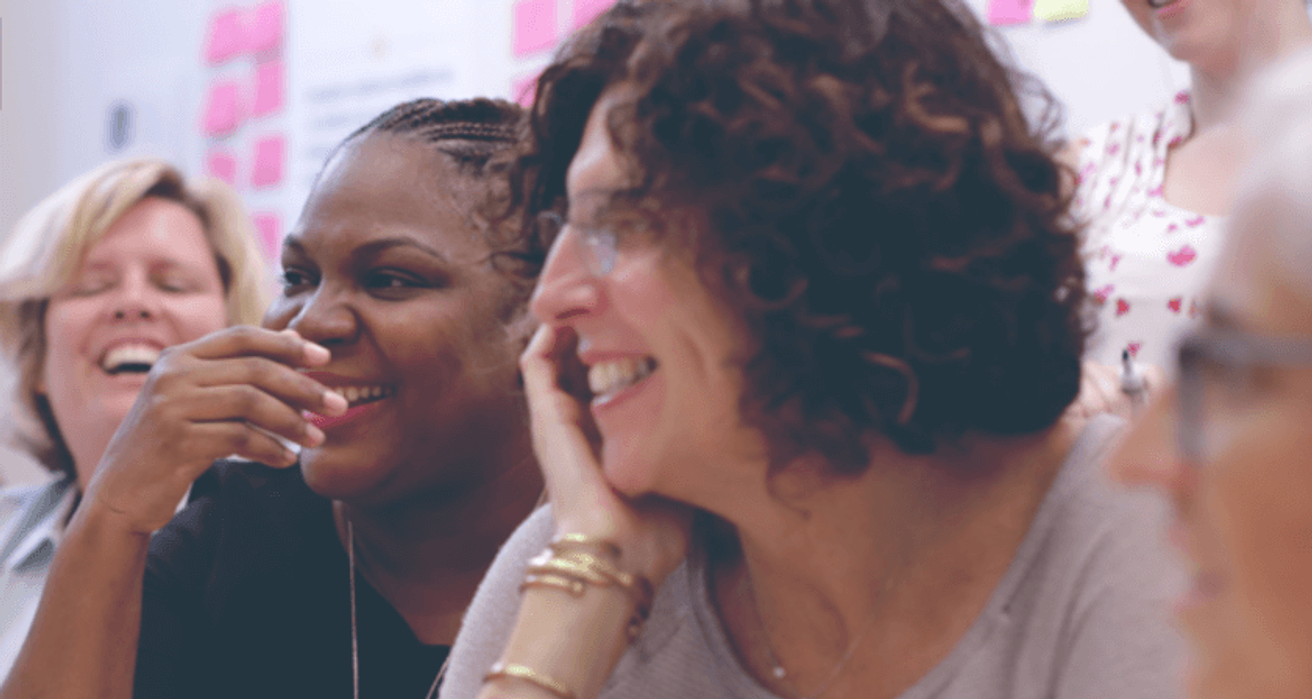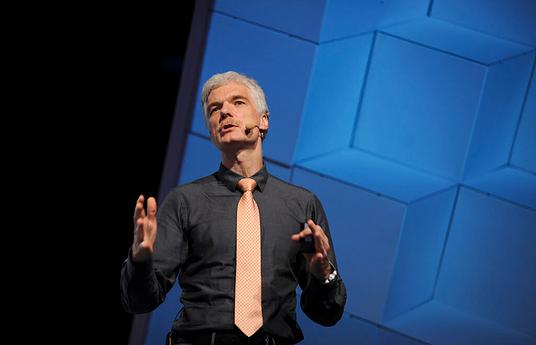Educators are in a unique position. Though curriculums, large class sizes and lack of support can leave teachers feeling overwhelmed, they are also on the ground in education and once that school bell rings they are the ones who get to decide how they’re going to deliver their learning. However, in order for educators to deliver a contemporary, forward-thinking education, they need to be fully supported and taught how to innovate education in a way that is beneficial for both students and themselves. That’s where organizations such as The Teacher’s Guild, picked as one of our 100 Inspiring Innovations of 2019, can be a valuable resource for educators who want to know how to innovate their craft.
The Teacher’s Guild is a professional learning community that equips teachers with the tools they need to become innovation leaders from their classrooms. We chatted to Molly McMahon, Director of The Teachers Guild, and Alysha English, Community Manager at The Teacher’s Guild, to find out more about their impactful work.
First thing’s first, what is The Teachers Guild?
The Teachers Guild is an ongoing collaboration between IDEO and Riverdale Country School, who have been working together for a decade at the intersection of education and design, starting with the release of The Design Thinking for Educators Toolkit. The Teachers Guild’s professional learning model is based off IDEO’s groundbreaking work in design and innovation, Riverdale Country School’s 80+ years as a beacon for instructional practice, and the best practices in adult learning theory and student learning science.
–MM
What role do you think teachers can take when innovating education?
The Teachers Guild believes educators are the innovators our schools and communities have been waiting for. If we want to prepare our students to become the problem solvers and ethical leaders of tomorrow, then we have to equip our teachers to be creative, equity-driven leaders of today. Through design, we catalyze educators to lead for and from their classrooms.
–MM
How many people are you currently working with?
The Teachers Guild community has grown to over 12,000 teachers who have shared over 1,500 ideas for our schools and helped each other with over 7,000 supportive contributions to each other’s ideas.
–MM
Why did you create ‘The Design Thinking for Educators Toolkit’?
The Design Thinking for Educators Toolkit was created because IDEO and Riverdale Country School believe that educators are designers and that education is the most human-centered profession. Whether it’s creating lesson plans, leading district initiatives, or navigating the needs of families, educators are constantly problem-solving through the lens of their students. Design Thinking instills the confidence that everyone can be part of creating a more desirable future, and is an approach used to take action when faced with a difficult challenge.
–MM
How many people has the toolkit reached?
Since it was released almost 10 years ago, the toolkit has scaled to a community of at least 100,000 educators worldwide. The toolkit continues to spread, and its learner-centered approach to problem-solving builds educators’ skills and confidence to design for the ever-changing needs of their students and schools.
–MM
Why is design-thinking essential for today’s educators?
Schools are where we dream of better futures for our students, our families, and our community. However, study after study shows that students are not prepared for the complexities of the world, and that inequitable outcomes for students of color and those in poverty are too often the norm. This dichotomy between the purpose of schools and the realities of the world is one reason why change efforts in schools are needed, but it makes change incredibly complex to activate.
To navigate these challenges and prepare our students to be ethical leaders and problem solvers of tomorrow, the adults who serve them must get better at driving change. But they can’t do this alone. The mindsets and methods of design-thinking help educators develop the trust, belief, and resiliency to embrace ambiguity, lead through change, and prepare their students for a purposeful future.
–MM
What are the core values needed to create change at this level?
The answer is threefold:
-
Belief in yourself and each other to create change is the single most important driver of student learning. John Hattie’s recent Visible Learning research reveals that collective efficacy, the belief in collective capacity to create change, having equally high expectations for all students, and evidence of positive impact on students, is the most important indicator of student achievement. Design thinking develops collective efficacy through testing and iterating ideas. That means starting small with a prototype, gathering feedback from students and peers, tracking observable changes, and then using that collaboration and evidence to design your way forward.
-
Trusted relationships are the most important unit of change in our schools because they set the conditions for learning and belonging. However, relationships are in deficit in schools. Teachers are isolated and spend only about 3% of their teaching day collaborating with colleagues. Design thinking strengthens relationships through empathy and collaboration. It requires that educators address their own bias and assumptions before reaching out to students to understand their unmet needs. Problem solving therefore happens through the process of developing ideas, gathering feedback, and reflecting together, rather than behind closed doors in isolation
-
It’s imperative that our educators be resilient learners if they are going to successfully prepare students for today and tomorrow. The World Economic Forum and Linkedin have both highlighted that active learning with a growth mindset is a core skill needed to thrive in the workplace of the future. Design thinking is an approach that helps adults get better at continuously learning and growing by developing their inquiry skills, engagement, collective efficacy, metacognition, self-efficacy and a human-centred approach.
–MM

How else are you helping educators to become changemakers?
Our signature program is Chapters, a professional learning experience that develops the local capacity of educators through district, school, and/or regional design teams. Through a mix of equitable learning practices, design-thinking, and community design, Chapters aims to reset the conditions of school communities so that every student is set up to succeed, no matter who they are, where they live, and how they learn.
Through adult learning experiences that equip educators with research-based practices and a human-centered design approach, Chapters members model the skills, mindsets, and behaviors students need to pursue future-ready and purposeful lives.
–MM
How does the Chapters programme help educators to overcome the challenges facing today’s teachers?
The challenges our schools and communities face are dynamic and increasingly complex. We are in a time of incredible innovation and deep divides, and this is felt acutely in our schools. Chapters like St. Vrain Valley in Colorado are already operating in the future by creating runways for their drone program and lessons that differentiate human skills from machine skills. Educators in Oakland, California are grounded in the needs of today, leading brave conversations about school safety, police brutality, and support for immigrant families.
–MM
It’s important to you for the change to come from within education, rather than organizations innovating education from outside of it, how do you manage this?
The Teachers Guild is no longer offering “design for educators,” but catalyzing “design by educators.” As John Creger, an educator in Fremont, California shared, “The Teachers Guild may well be the most encouraging development I’ve seen come to Fremont in my 30 years of teaching here. Unlike previous moves from the corporate world, this one does not dictate outcomes or processes, but equips teachers with rich innovation skill sets, trusts us to identify needs, and backs us as we design to meet them.”
–MM
What advice would you give to educators who want to be at the forefront of education?
Be empathetic, start small, take a bias towards action and learn from failure. The design approach starts with empathy, helping us better understand the unmet needs of our students. This is the heart of the design approach and the heart of our work. To create change in education, we must remain learner-centered and keep students at the forefront of everything we do. And lastly, don’t do this alone. Reach out and invite others to problem solve with you; especially your students.
–AE
Thanks to Molly McMahon and Alysha English for chatting with us more about their transformative, forward-thinking work. Find out more about The Teacher’s Guild and how to get involved over on their HundrED 2019 Innovation Page!



